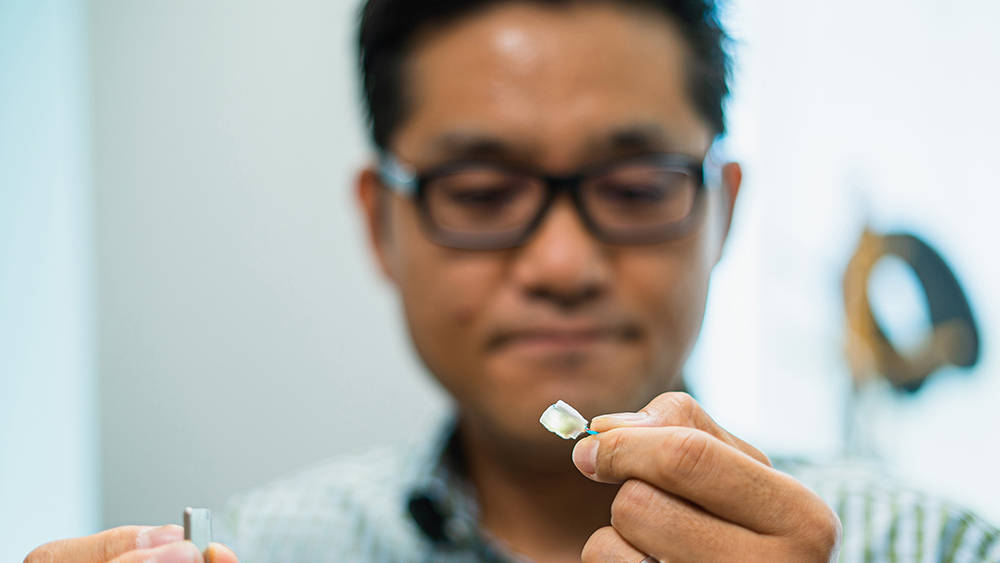
Story Overview
Dr. Sung II Park and his collaborators have developed a wireless surgical lighting device that is actually a light within a surgical patty, which allows illumination in the exact spot where the surgeon is working.
We know that no matter how much experience your surgeon has or how low-risk the surgery is, there are always risks associated with the process. Additionally, surgeries are expensive due to labor and time. Dr. Sung II Park is working to lower the risks and cost of surgeries by providing a unique way to create a well-lit environment in the operating room.
Park and his collaborators have developed a wireless surgical lighting device that is actually a light within a surgical patty, which is a pad used during most operations to protect tissues and manage fluid. Instead of being an external overhead light or even a light on another type of surgical tool, the patty design allows for illumination in the exact spot where the surgeon is working.
This directly combats the lack of efficiency of most surgical lighting devices that cannot provide high-light intensity in a particular area, and leaves general surgical procedures susceptible to low-light conditions, which can potentially lead to complications. In addition, it not only illuminates the surgical field, it also absorbs biofluids or blood in a surgical spot.
“The lighted surgical patty is a multilayer patty, wherein one of the layers includes a lighting apparatus,” said Park, assistant professor in the Department of Electrical and Computer Engineering at Texas A&M University. “Two outer layers of the lighted surgical patty include nonabsorptive fibers woven near their borders to form a uniform surface that sandwiches together a center lighted layer. The center lighted layer has an LED light encapsulated in a biocompatible layer. The center lighted layer may also contain a number of LED lights arranged in various formations so as to provide a unique lighted environment for various surgical settings.”
Park has a close collaboration with Barrow Neurological Institute in Arizona, and has been working with them on several projects since 2016. For this project, he is working closely with Dr. Clinton Morgan, neurosurgery resident.
We filed an international patent in 2017. Kogent Inc., one of the biggest surgical tool companies, agreed on the license and is looking into a path to commercialization. Hopefully, we can see the light apparatus being used for surgeries by next year.
Park, who took the lead on technology development said, “[Our device] could eliminate the need for extra surgical patties and/or lighting devices, and will allow easy access to surgical fields. This could reduce surgery time and costs related to surgery.”